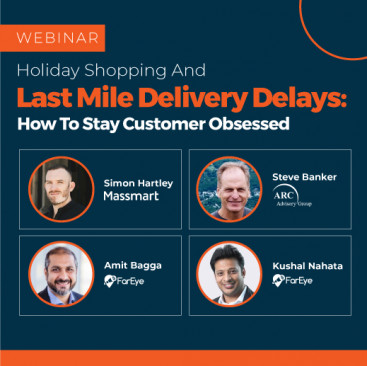
FarEye expects to turn unicorn within next 6 to 12 months based on their growth and the valuation recent equity investments have accorded the company. A unicorn is a startup that is privately-owned with a valuation exceeding $1 billion. Crunchbase reports that $150.7 million has been invested in the company. The company operates in 30 nations and has over 150 customers.
FarEye classifies itself as an intelligent delivery logistics platform. Basically, the platform combines last mile routing with real-time visibility to the shipments.
There have been solutions for routing for many years. But FarEye found a gray space in the market, they focused on last mile deliveries. Traditional routing solutions looked to optimize deliveries by developing routes for their fleet of trucks that lead to on-time deliveries at the lowest costs across the fleet. This reduction in costs is driven by grouping orders intelligently and then creating dense routes for a fleet of trucks. If you know what your deliveries are for the coming week, there is more scope for driving savings than if you are scheduling for deliveries that occur the next day. The solutions also need to understand the constraints: how many goods could fit on a truck, the hours a customer site is open, hours of service requirements for the driver, and many other constraints as well. These constraints mean that the shortest routes are not always the best ones.
Last mile delivery is more difficult. You can’t optimize based on grouping all your orders for the next day, the cut off times surrounding ecommerce are getting shorter and shorter. A retailer who promises they can deliver within four hours is already starting to fall behind their competitors. There are ecommerce startups promising deliveries within 15 minutes.
Last mile deliveries also tend to be smaller. Traditional routing solutions were often delivered in vans or trucks. An order might be as much as several pallets worth of goods. In last mile, an order might be just a couple of items. Deliveries are made by vans, but FarEye is also working to understand the constraints associated with motorcycle and bicycle deliveries, drones, and delivery robots operating on a sidewalk. In a recent FarEye webinar, an executive at Massmart, a Walmart-owned retailer and the second-largest distributor of consumer goods in Africa, talked about how you can’t assume bicycles can deliver across a whole city. There are roads that are safe for bikes, and roads that are not. The bike routes must be carefully mapped.
Further, a traditional routing solution does not use outside carriers and couriers to make deliveries, they use their own truck assets. That is not the case with last mile. A solution must be able to integrate to partner carrier systems. FarEye’s integration capabilities allows the platform to connect with upstream and downstream carrier’s logistics systems. If you want to enable fast, accurate deliveries, then automation is critical.
A lot of the payback associated with a last mile solution comes from reducing returns. If shipments arrive late, there may be no one home to receive them and the items get returned. In many countries, homes or businesses don’t have addresses. A deliver person may be told to deliver at the third house on the left after the big yellow house.
The ability to geocode the location of new customers is critical. Several routing solutions have this capability, but in the above mentioned webinar, FarEye’s CEO, Kushal Hahata, said that FarEye did not believe that the third-party GPS platforms used by many routing vendors were good enough. They developed their own.
Geocoding is not enough. FarEye also includes a low code, business process management engine that allows rules for deliveries to be easily added. For example, a geocode for the location of a residence is not good enough if the courier must park four blocks away and then climb three flights of stairs to make the delivery. Those rules need to be captured so that the platform understands both how to best make the deliveries and how long the delivery is apt to take. FarEye’s platform also has machine learning capabilities. Over time, the platform does a better job of predicting how long deliveries will take.
The platform also has returns analytics. The solution understands who is making too many returns. If an address is associated with too many returns, a retailer can call and learn what went wrong with a delivery, or make sure a person will be home to accept the delivery, or even make the tough decision not to do business with that customer in the future. “FarEye’s solution provides the ability to add returns to delivery routes in real-time,” Mr. Nahata explained.
Ecommerce continues to grow very quickly. Covid has only accelerated ecommerce’s growth. FarEye is in the right place at the right time to capitalize on this megatrend. It’s valuation reflects that.


